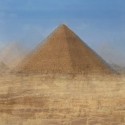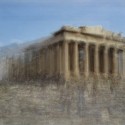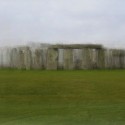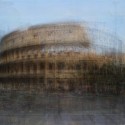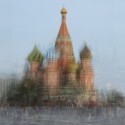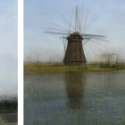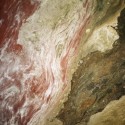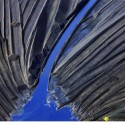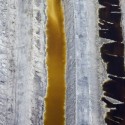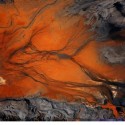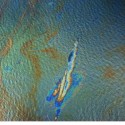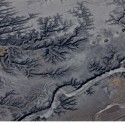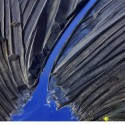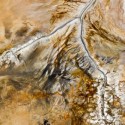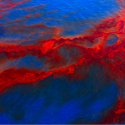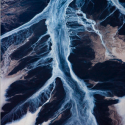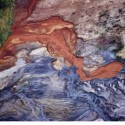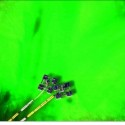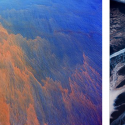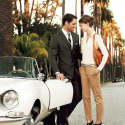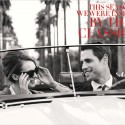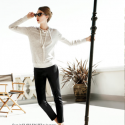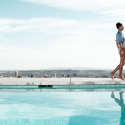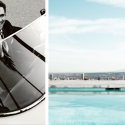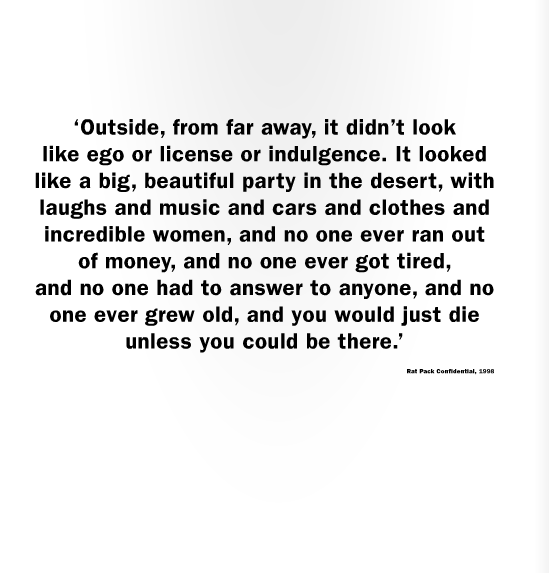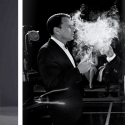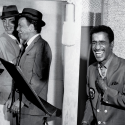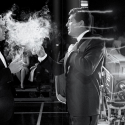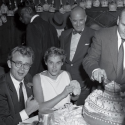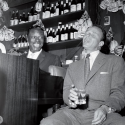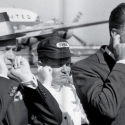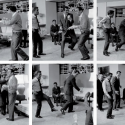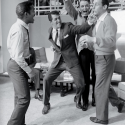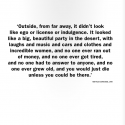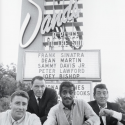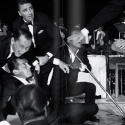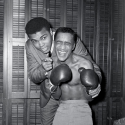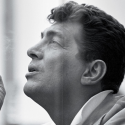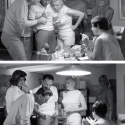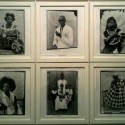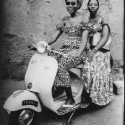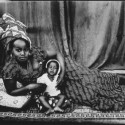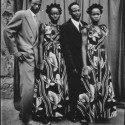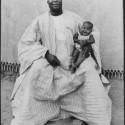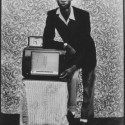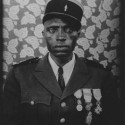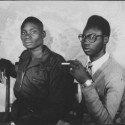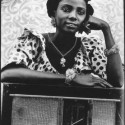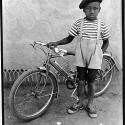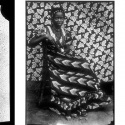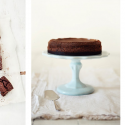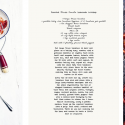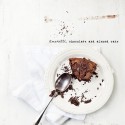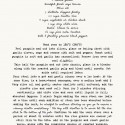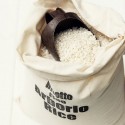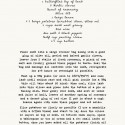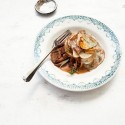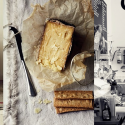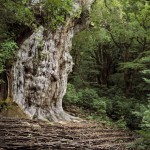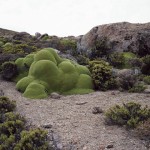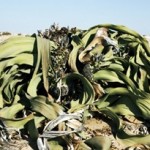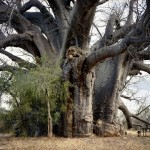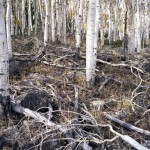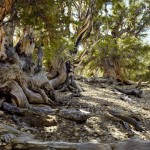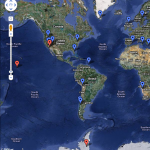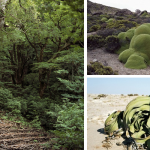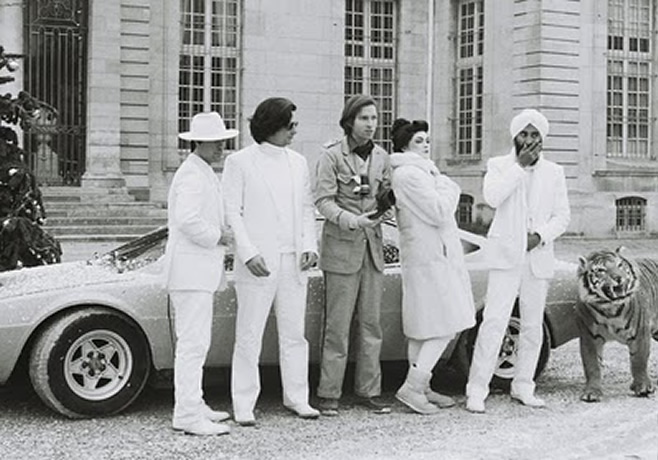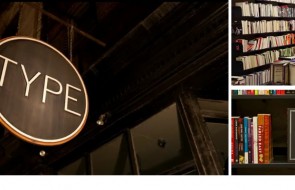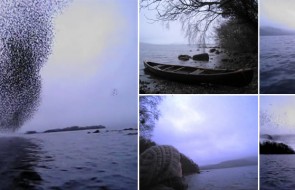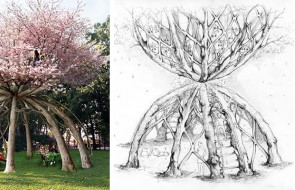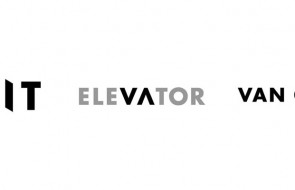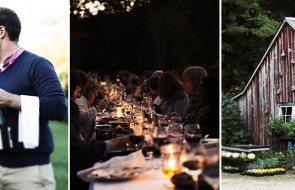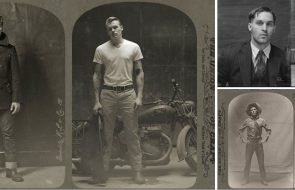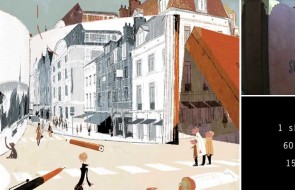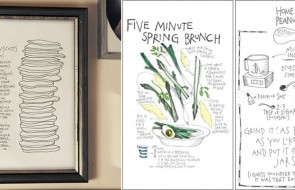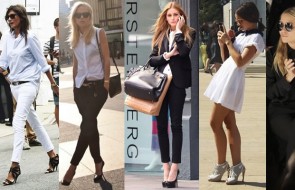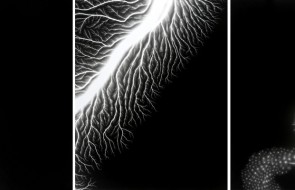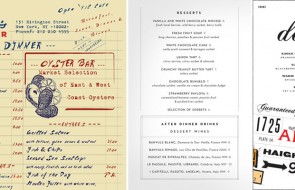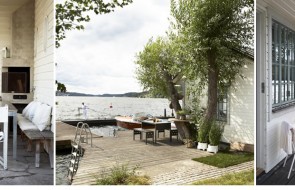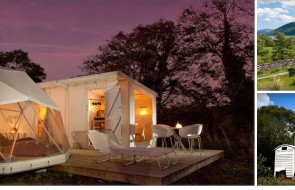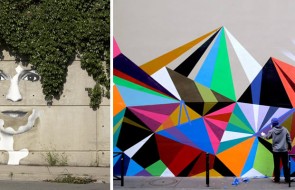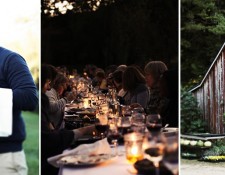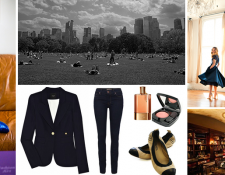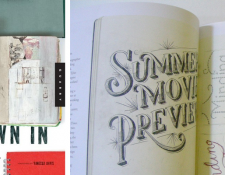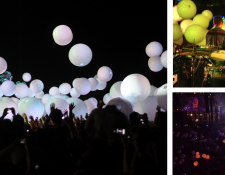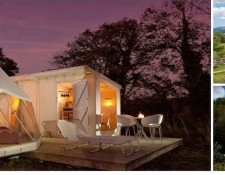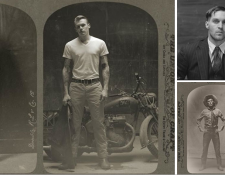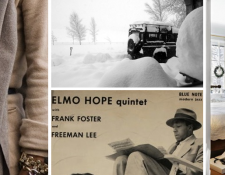Tourist Photo Composites That Look Like Monets
Artist Corinne Vionnet creates what at first appear to be Impressionist-style paintings by searching photo sharing sites using keywords for travel landmarks and then layering 200-300 of the photos of the same site on top of one another, creating this Impressionist effect.
The work is both catchy and amusing as well as slightly haunting and creepy, raising questions like, “Why do we take the same photos over and over? To prove we’ve been there?” “Is our experience of a place belittled and made tritewhen confronted with the reality that thousands of others have been there and chosen to capture the moment the exact same way?”
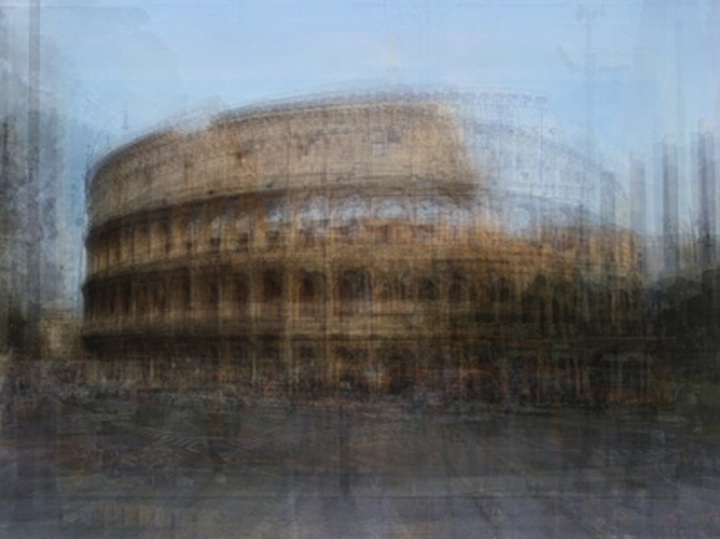
Or, one could see it as life and community-affirming in a way– even though so many have taken this same shot
before, it remains important and significant to the individual, and by taking the shot, and then uploading it to a photo sharing site, we all continue to contribute to a collective memory and to broaden the base of things we all as humans value and crave to experience.
I think this project could send me off on philosophical wonderings for quite a while, in a neverending argument with myself, so I’ll stop now and let you just enjoy this feat of technology. How cool is it that online photo sharing made something like this possible??
Ok and one final thought– a daydream I think about a lot that is relevant to this post– Have you ever wondered how many other people’s travel photos you appear in? Wouldn’t it be cool if face-recognition technology could scan photo-sharing sites and identify all the photos you’ve appeared in all over the world??
[via Fast Co.]
Abstraction of Destruction
What you’re looking at above is:
At left: Oil floating on the Gulf of Mexico after the Deepwater Horizon spill.
At right: Residue stream of water and chemicals resulting from coal washing.
Freaky, right? The images appear so beautiful at first and could initially be thought to be colorful abstract paintings, and even once you realize they’re photographs, you’d probably think the colors have been manipulated and you’d still be wondering what they are photographs of. Where, you’d wonder, can colors like that be found?
Well, unfortunately, the answer is ‘at the sites of manmade waste and disaster.’ J. Henry Fair’s new exhibit, “Abstraction of Destruction,” at the Gerald Peters Gallery, draws our attention to the messes we are making in a roundabout way. No harsh photos of birds covered with oil or babies with birth defects; instead, we are drawn in by the other-worldly colors before we realize that they are the freakish by-products of our own manmade processes.
Check out the gallery for more images and captions describing what each image is. I think the grossest is from the bacon factory…
J. Crew does LA
I loooove the fact that J. Crew went outside their usual box for their newest catalog. When you think J. Crew catalog settings, you immediately think… coast of Maine canoe and picnic-spot type stuff. Not so for their latest, which is set in LA and wonderfully reminiscent of the Mad Men episode when they go to LA and Don goes MIA (not so much in the clothes, but in the photography)… cool blue pools, graphic black and white stripes, classic cars, and palm trees and sunshine.
[via Dress, Design, Decor]
LustList: The Rat Pack Master Edition
Loving the looks of this beautifully-bound limited edition compendium of photos of the Rat Pack in their heyday. The packaging, designed by Progress Packaging, was what first caught my eye, but the photos and content are equally appealing. Published by Reel Art Press, here is what they say about the book:
“Frank Sinatra’s legendary clique defined life in the fast lane throughout the late fifties and early sixties, dominating American culture and epitomising a life of cocktails, love affairs and Hollywood glamour.
A select group of photographers, including Sid Avery and Bob Willoughby, captured the Rat Pack in their heyday. Many of the images they produced have been largely stored away, many even undeveloped. For the first time, access to these shots has been made possible to produce one deluxe, collector’s edition.
The Rat Pack is the definitive book on Frank, Dean, Sammy and co. tearing up Hollywood and Las Vegas with an extended cast including Marilyn Monroe and JFK. Fifty years on from the year many refer to as The Year of the Rat Pack, 1960, and their influence endures. Shooting Ocean’s 11 by day, performing at the Sands by night and sweating out the sour mash in the sauna in between, The Rat Pack includes behind the scenes footage at the JFK Presidential Inauguration and house parties with Ava Gardner and Marilyn Monroe.”"
Seydou Keita
Last month at Art Basel Miami, one of my very favorite exhibitions was the work of Malian photographer Seydou Keita. At first I was simply aesthetically taken in, and then I found out the history of Keita and was totally hooked.
First, a brief background on Keita’s work itself. Keita, originally trained as a carpenter, set up a portrait studio in 1948 to take photos for people to send to their relatives. This was common during this period in Mali, as many were leaving their families in the country and moving to the city, where they would then send back photos of themselves.
What is significant about this is that it means that Keita’s photographs were not actually made as art, but rather as commercial prints, which one might never guess upon first inspection, since the images are so rich and carefully composed. With their display of beautiful textiles, they are highly reminiscent of Matisse’s work, which often featured patterned textiles (Matisse’s family were weavers and he collected textiles) in both the foreground and background.
Even more interesting is that Keita was operating in a complete vacuum as far as art historical or photographic education, meaning that his bold compositions and use of textiles could not have been influenced by the likes of Matisse, or anyone else for that matter. In fact, Keita has said that his original backdrop for the photos was simply his bedspread.
However, despite his lack of training and the fact that he made portraits to make money (rather than as “art for art’s sake”), his photos perfectly capture a remarkable time in Mali’s history as it went from French-ruled to independent and Malians were finding and forming their identity as formerly French-ruled Africans with a newfound exposure to the West. Keita’s subjects are seen alternately in traditional dress and Western-style suits proudly presenting stock props Keita provided including radios and plastic flowers.
Now, for the juicy story of how Keita’s work became known to the world. In the 1960s, after becoming modestly successful as a portrait artist, the newly independent national regime asked Keita to work for the government. He refused, and when a general showed up at his studio to intimidate him, he buried his 7,000+ negatives in a metal box in his backyard before going to work for the government.
His portraits remained entirely internationally unknown until the 1990s, when a French photojournalist visited Mali and discovered his work and they quickly came to the attention of Jean Pigozzi (recently featured in Vanity Fair for his extravagant bachelor lifestyle and art collection), who began to have them printed from the negatives, shown in galleries, and printed in a book about the artist, which quickly made him the new toast of the African-art-collecting world. The story and controversy goes on, but I’ll leave you with that, and you can read more this NYT article if you’re curious for all the details…
[PS-- If you've been following this blog for a while, and Keita's work looks familiar, you may be remembering the post on contemporary Malian photographer Malick Sidibe. As it turns out, Sidibe was heavily, and undeniably, influenced by Keita, who was working in Bamako from the 1940s through the 1960s-- essentially just one generation ahead of Sidibe.]
What Katie Ate
If you’re the type who likes to read cookbooks in bed before you go to sleep, haul out your iPad tonight and check out What Katie Ate by Katie Quinn Davies. Just a warning, you might be up late trawling through the archives bookmarking enough dishes to last you all winter.
The food styling and photography are so gorgeous that they could qualify as art. I think I would gladly have prints of her images hanging on my kitchen wall. I can’t wait until she puts out a cookbook!
The Oldest Living Things in the World
Oh. My. Talk about wonderlust. I love this project. Rachel Sussman created this project, called “The Oldest Living Things in the World,” as a photographer with a fine arts background who wanted to use photographs to expand our minute human experience and understanding of time.
Inspired by an ancient tree in Japan while on a photography trip, she realized that it would be really interesting to try to document the oldest living species, and was amazed to find that no one had ever done a project on this subject in either the arts or the sciences. So, she took it upon herself! The result is this portfolio of literally the oldest living things on the earth– all these old plants that are all at least two THOUSAND years old!
In the gallery above (click thumbnails to enlarge, then click on the right side to go to the next image), the images are as follows:
jomon sugi japanese cedar (2,180 – 7,000 years old, yaku shima, japan); la llareta (up to 3,000 years old, atacama desert, chile); welwitschia mirabilis (2,000 years old; namib naukluft desert, namibia)
2010/08 Rachel Sussman from CreativeMornings on Vimeo.
Levi’s Photo Workshop
This is such a fun (and smart) idea by Levi’s. They’ve created a pop-up “shop,” in New York, but instead of being an actual Levi’s store, it’s a photography center– with computers and equipment for digital photo processing, a photobooth, and an area where you can rent out vintage film cameras. And should you need any help, there are sharply dressed Levi’s reps there to assist.
And this pop-up is on the heels of a successful printmaking workshop space in San Francisco a few months ago. Pretty clever move for a denim brand that as of a couple years ago was a rather unexciting, tired brand rapidly losing market share to the the dozens of expensive niche denim purveyors out there.
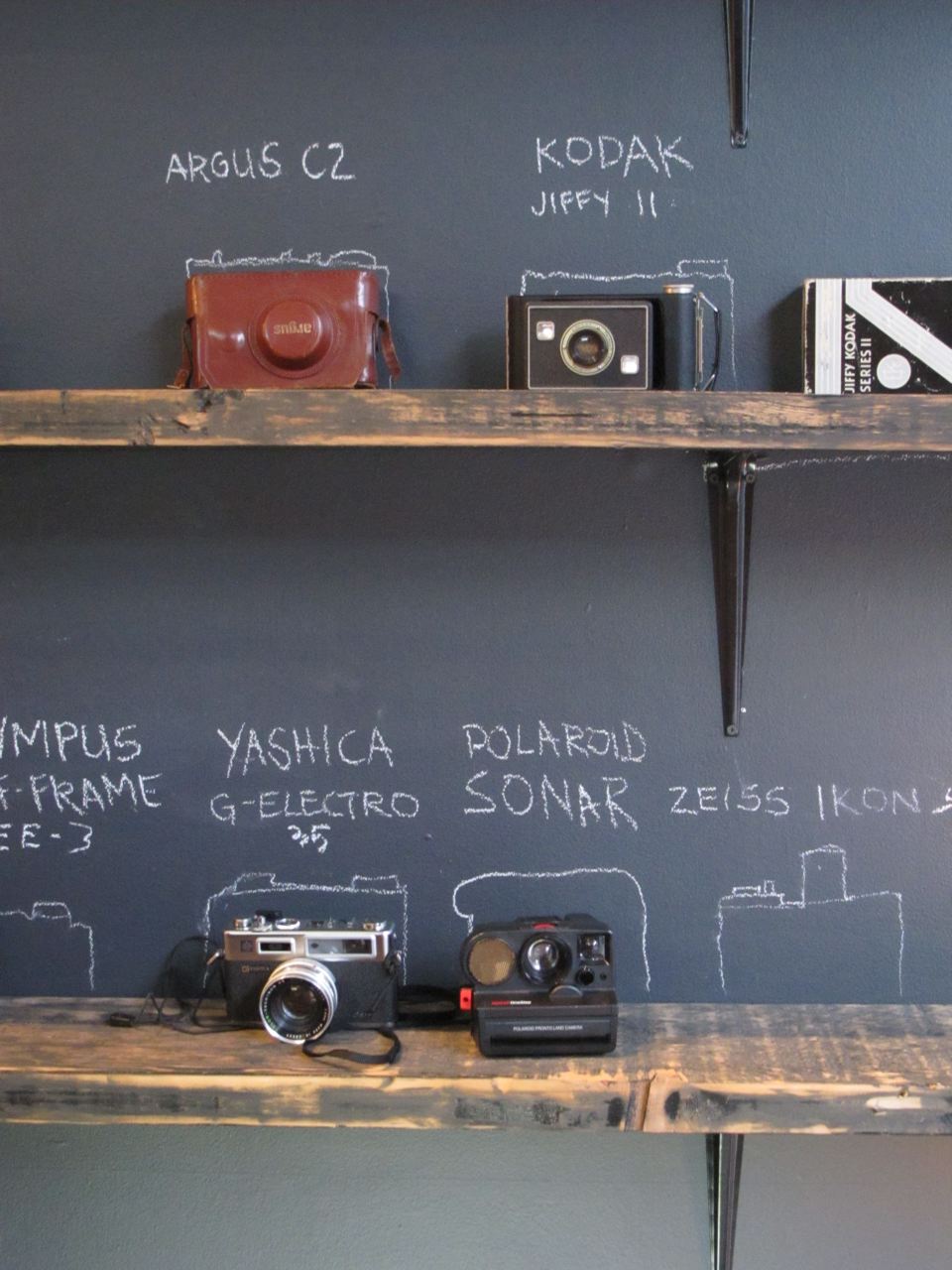
Here’s what CoolHunting had to say about the thinking behind the project after their conversation with the brand’s head of collaborations, Joshua Katz:
“The payoff of course is “if you make that extra effort, people can believe in it.” Or in other words, their success comes from embracing hard work and community as core values from the top down. “There are fundamental philosophies that don’t change,” says Katz. “The [brands] that stick around are people who recognize that they are part of a community.” In addition to opening its doors to artists, community groups and non-profits, all proceeds from sales of Levi’s goods (including the exclusive Trucker Jacket, pictured) and camera-related items will go to NYC-based charitable organizations Harvey Milk High School, Lower Manhattan Cultural Council and Edible Schoolyard New York.”
I personally think that the rationale presented may be a little overwrought, but who cares, because it’s fun and cool and its getting them tons of attention, press, and renewed brand awareness and perception. Well done, Levi’s.
More images and info on coolhunting.
Wes and Crew
Jacques Henri Latrigue
I am totally enamored with Jacques Henri Lartigue and his work. Born in 1894, he received a camera for his seventh birthday, and from then on essentially kept a photo diary of his life. Fascinated by the things most young boys are interested in, including cars, dogs, his family and friends at play, aircraft, many of his most famous photographs were taken during his childhood.
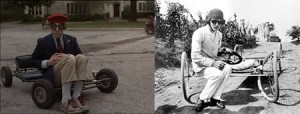 Apparently, Wes Anderson is a big fan and has modeled many of his characters and images after Lartigue’s work, including Max from Rushmore. Also did you notice the photo of Zissou? Bet that’s where he got Steve Zissou’s name!
Apparently, Wes Anderson is a big fan and has modeled many of his characters and images after Lartigue’s work, including Max from Rushmore. Also did you notice the photo of Zissou? Bet that’s where he got Steve Zissou’s name!
As he continued to document his surroundings and outings for his entire life, he later took many photos of fashionable Parisian life and French vacation spots, but I’ll save that era for another day.
Today, I’m loving the joie de vivre, humor, and idiosyncrasies captured in his childhood photographs.
Can you believe his technical capability at such a young age? This was before digital made everything look good, y’all.

